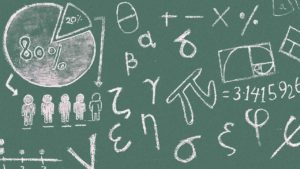The rhythmic swing of a pendulum, the mesmerizing ripples on a pond’s surface, the melodious tunes that reach your ears – these are all manifestations of oscillations and waves. As you embark on your journey towards conquering JEE Main Physics, understanding these fundamental concepts becomes crucial. This blog serves as your guide, unraveling the secrets behind these captivating phenomena.
What are Oscillations?
Imagine a weight suspended from a string swinging back and forth. This is a classic example of an oscillation. In simpler terms, oscillation refers to the repetitive variation of a quantity about a fixed point (equilibrium position) over time. The key characteristics of an oscillation include:
- Period (T): The time taken to complete one full cycle of oscillation (measured in seconds).
- Frequency (f): The number of oscillations completed in one unit of time (measured in Hertz, Hz). The relationship between frequency and period is f = 1/T.
- Amplitude (A): The maximum displacement from the equilibrium position.
What are Oscillations and Waves?
Now, imagine dropping a pebble in the pond. The ripples that spread outwards are a form of wave. A wave, in essence, is a disturbance that travels through a medium (like water in this case) transferring energy without transporting matter itself. Here’s what defines a wave:
- Wavelength (λ): The distance between two consecutive crests (peaks) or troughs (valleys) of the wave.
- Wave Speed (v): The speed at which the wave disturbance propagates through the medium. The relationship between wavelength, frequency, and wave speed is v = fλ.
- Wave Equation: This mathematical equation describes the propagation of a wave in a medium, taking into account factors like wave speed, wavelength, and the properties of the medium.
Different Types of Oscillations and Waves
The world of oscillations and waves is vast, encompassing various types:
- Simple Harmonic Motion (SHM): This is a special type of periodic motion where the restoring force is directly proportional to the displacement from the equilibrium position. Examples include a mass-spring system or a pendulum with a small angular displacement.
- Damped Oscillations: In real-world scenarios, friction or other dissipative forces gradually decrease the amplitude of oscillations over time. These are called damped oscillations.
- Forced Oscillations: When an external periodic force is applied to a system, it can initiate forced oscillations. The system oscillates at the driving frequency of the external force, with resonance occurring when the driving frequency matches the natural frequency of the system (resulting in a larger amplitude).
- Transverse vs. Longitudinal Waves: In transverse waves, the particles of the medium vibrate perpendicular to the direction of wave propagation (like water waves). In longitudinal waves, the particles vibrate parallel to the direction of wave propagation (like sound waves).
- Mechanical vs. Electromagnetic Waves: Mechanical waves require a medium for propagation. Sound waves in air or water are examples. Electromagnetic waves, on the other hand, can travel through a vacuum and consist of oscillating electric and magnetic fields (like light waves).
When two or more waves meet at a point in space, their effects superimpose on each other. This can lead to constructive interference (where the amplitudes add up) or destructive interference (where the amplitudes partially or completely cancel each other). Understanding superposition helps predict the resultant wave pattern.
Applications of Oscillations and Waves
The concepts of oscillations and waves have far-reaching applications in various fields:
- Vibrations in Buildings and Bridges: Understanding the natural frequencies of structures helps prevent catastrophic failures during earthquakes or strong winds.
- Sound Engineering: The design of musical instruments, soundproofing materials, and audio equipment all rely on the principles of waves and acoustics.
- Electromagnetic Spectrum: Radio waves, microwaves, infrared radiation, visible light, ultraviolet radiation, X-rays, and gamma rays – all belong to the electromagnetic spectrum, with applications in communication, medicine, and astronomy.
JEE Main: Tips to Master Oscillations and Waves
- Master the Fundamentals: Ensure a solid understanding of basic concepts like period, frequency, amplitude, wavelength, and wave speed.
- Practice with Different Types of Oscillations and Waves: Solve problems involving SHM, damped oscillations, forced oscillations, and different wave types.
- Grasp Superposition and Interference: Understand how waves interact and predict the resultant wave pattern.
- Apply the Mathematical Tools: Be comfortable with mathematical equations governing oscillations and waves (like the wave equation).
JEE Advanced Previous Year Paper
JEE Advanced: 28-Aug-2022 ( Shift 1 )
JEE Advanced: 4-Jun-2023 ( Shift 2 )
Crack Admission Into IIT With PracBee’s 1:1 JEE Online Course
Effectively utilize limited time to completely revise JEE Advanced syllabus with our fully customized approach. It caters to your learning needs, helping you to easily crack the IIT-JEE Exam.
Key Features:
![]() All live classes in 1:1 mode
All live classes in 1:1 mode
![]() High Focus on Result
High Focus on Result
![]() 100% Personalized & Interactive classes
100% Personalized & Interactive classes
![]() Rated 5/5 by 95% students & parents
Rated 5/5 by 95% students & parents
![]() Weekly Feedback to Parents
Weekly Feedback to Parents
![]() 1:1 Mentorship by Senior IITian Faculty
1:1 Mentorship by Senior IITian Faculty



